A Step-by-Step Guide to Cutting a Butternut Squash
Butternut squash can be hard to cut! Here is your easy, step-by-step, pictorial guide for how to cut butternut squash.
I love butternut squash, especially in recipes like these yummy Butternut Enchiladas, but I used to avoid using this delicious squash in recipes because I hated cutting the squash. It seemed like a herculean task to get a knife through the hard-as-a-rock squash, and it just wasn’t worth it. I think a chainsaw was mentioned once or twice.
But then I got a new knife. And life changed. Well, maybe it wasn’t quite that dramatic. But cutting squash got a whole lot easier!!
How to Cut Butternut Squash
1. Choose your knife
Get a good knife. A heavy, sharp chef’s knife is best. (This is the knife that gets the biggest workout in my kitchen. It works great!)
2. Wash the squash.
You don’t want any dirt getting on the inside of the squash.
3. Break off the stem.
This website is brought to you without annoying ads because we can better live healthier lives without the influence of marketing. How can you help keep this site ad-free? If you purchase anything through the affiliate links on my site, your cost is the same, but I receive a small commission. Thank you!
You can use the back of a knife to “knock” the stem off, but I usually hit it against my cutting board and it breaks right off.
4. Peel the squash, if desired.
Just as a good knife makes cutting the squash easier, a good peeler can really zip through the job. Not all peelers are created equal. I’ve used some that I would’ve happily traded for a butter knife.
I really like the OXO Peeler. It’s easy to grip and cuts sharp. I also like my Swiss Peeler. It has a carbon-steel blade and is super sharp. You hold it differently than the OXO peeler, and for some vegetables this fact makes the job a little easier.
Don’t try to use a paring knife to peel the squash. It makes the job much more difficult (in my opinion).
5. Off with the neck!
Once the squash is peeled, make a cut where the neck and the body (bulb end) of the squash meet. Be sure to use a good knife for this job. Here’s the knife I use.
Be sure the squash and the cutting board are secure and stable so things don’t start to move just as you start to cut, causing your knife to slip.
6. Cut the neck in half lengthwise.
Place the cut end on the board and slice down from the top. You can also lay the squash down on the cutting board and cut the long end, but the squash can roll while you are trying to cut, so this method isn’t as safe.
7. Cut the body (bulb end) in half lengthwise.
Now you should have four pieces: two neck halves and two bulb halves.
8. Remove seeds.
There are two ways to remove the seeds from the seed cavity.
The first way is to use a spoon to scoop out the seeds. The sharper the spoon edge, the easier this is.
The second way is to slice the squash body first …
… and then cut the seeds out with one swipe of a knife.
I prefer the second way because sometimes the seeds have a lot of strings and fibers attaching them to the seed cavity, and I get impatient with scraping through all those strings. And they get all tangled up on my spoon. Cutting seems much quicker to me.
9. Cut the neck
Once you have the squash body cut into slices, lay the neck down on the cut side and cut the neck into slices.
10. Cube, if desired
If you want cubes, cut the slices into cubes.
Viola! You now have beautiful squash cubes ready for your favorite recipes that use winter squash ….
Healthy Butternut Squash
Rich in phytonutrients and antioxidants, low if fat, high in fiber, and chock full fabulous flavor and awesome possibilities, the butternut is a real fall favorite!
You my also like:
Before you go . . .
Did you know that you can eat all this delicious food AND lose weight? You can!
No calorie counting. No portion sizes.
Join my online weight loss program today!


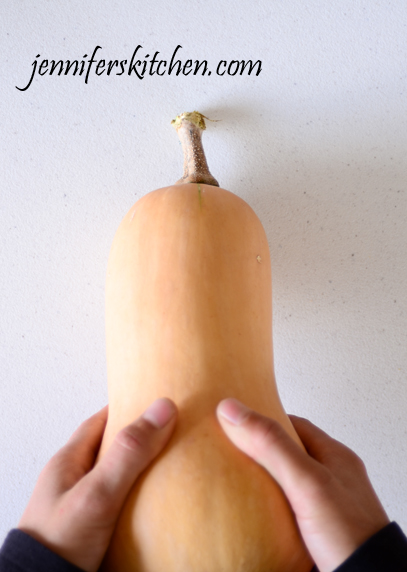
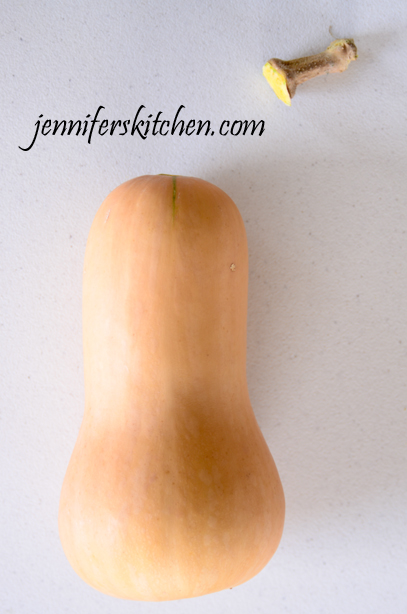
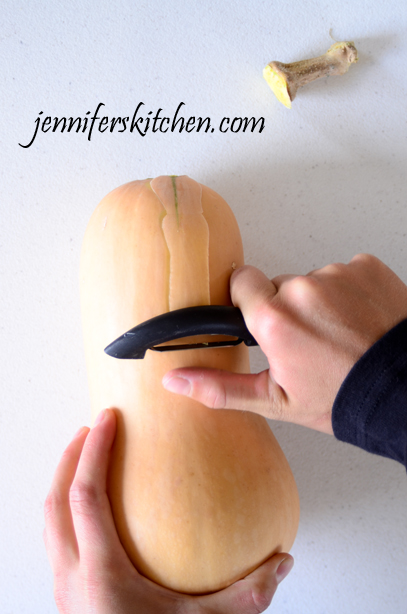
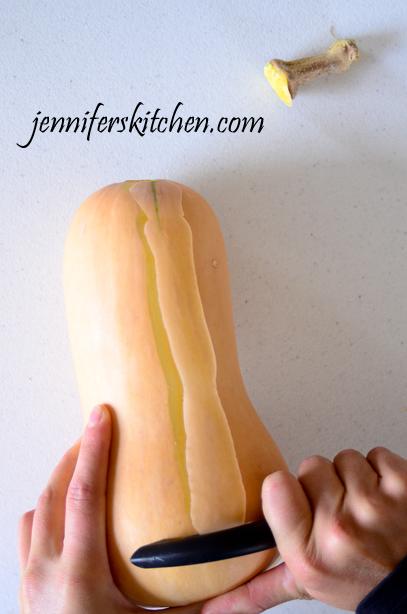
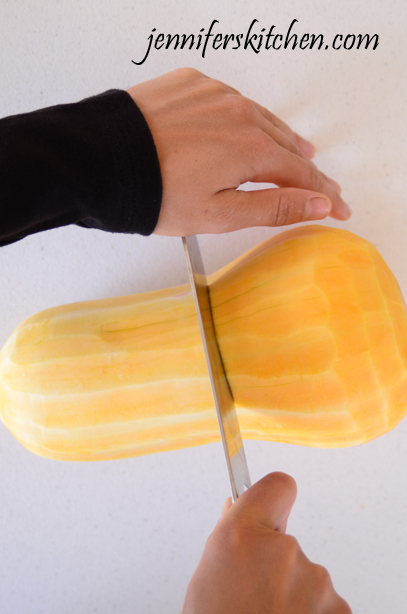

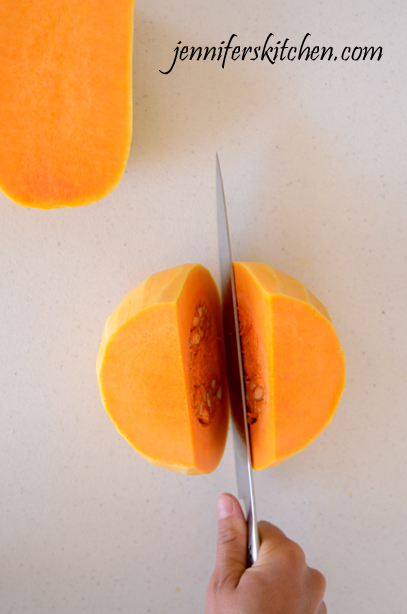
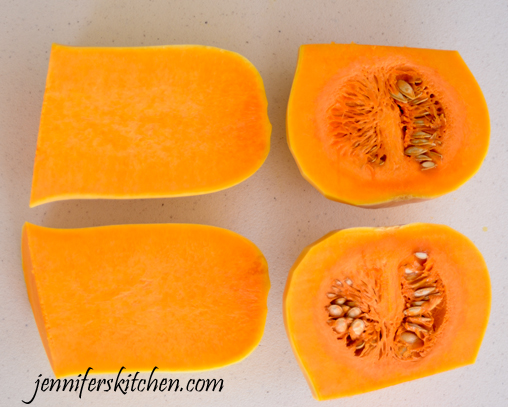
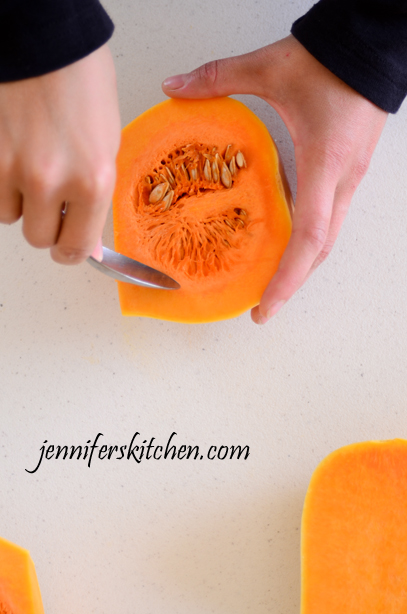
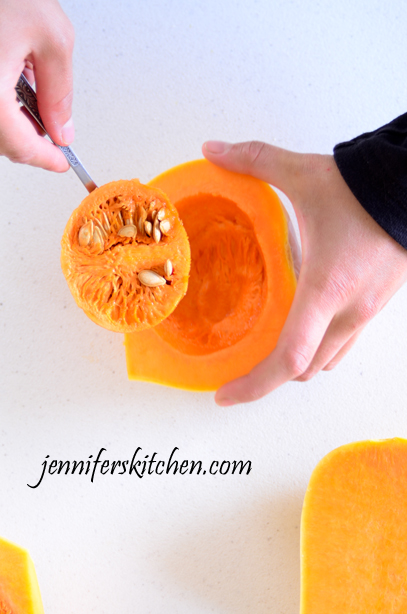
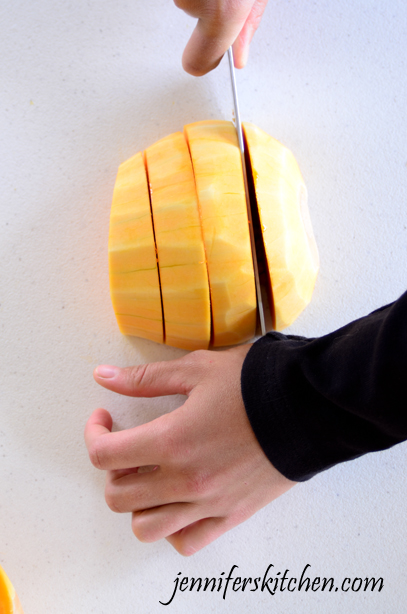
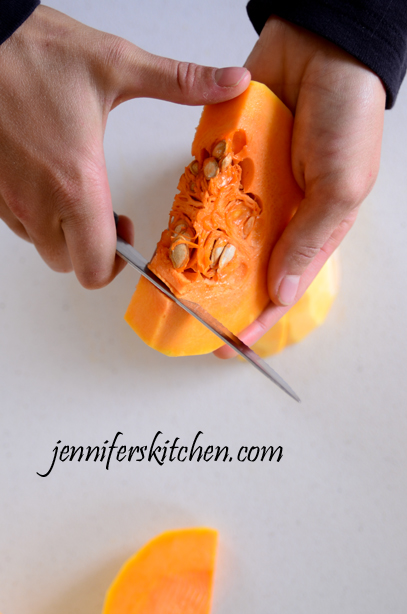

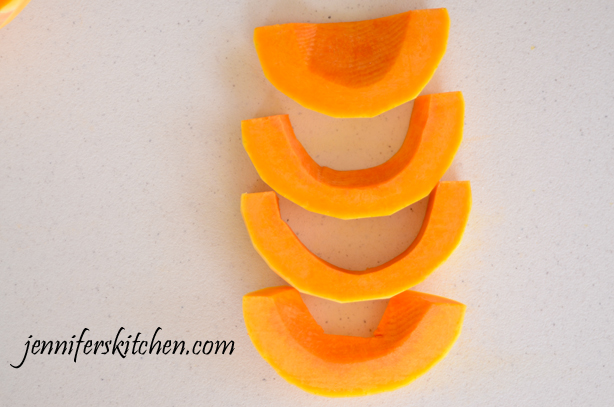

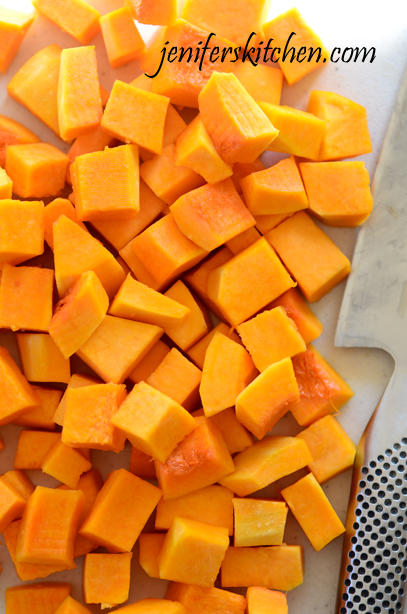

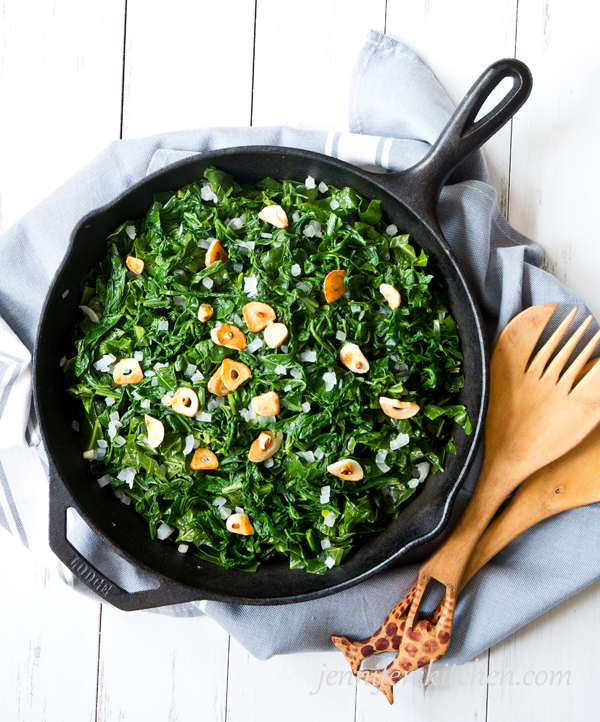

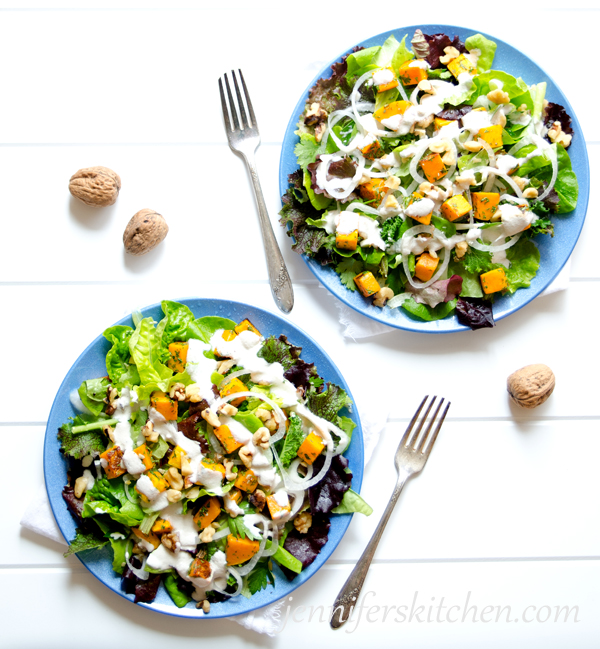

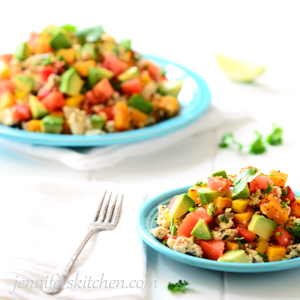
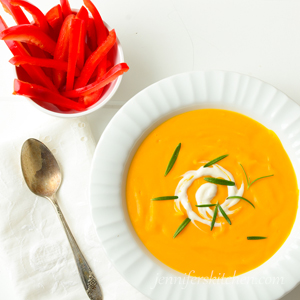
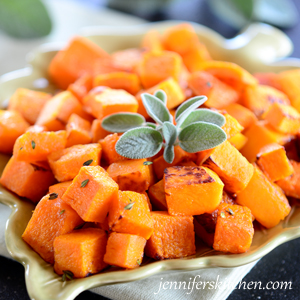
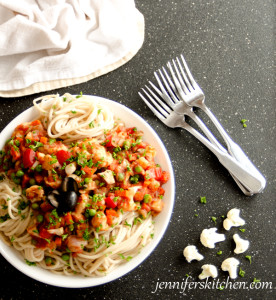
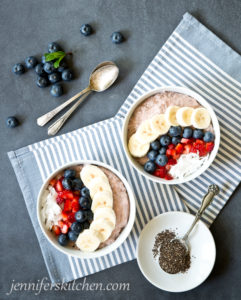

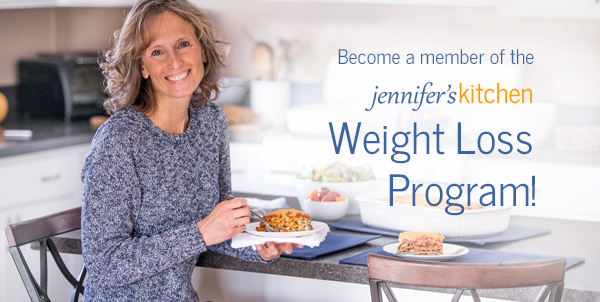
Jennifer,
Your website is amazing!!! I cannot wait to try your recipes. When is your cookbook coming out? Your pictures are great!! Your recipes are sound amazing!! You have easy to understand reasons behind eating healthier. It is the start of a fantastic cook book!!
Quick question, if you bake certain items, such as chia seeds, does it take away from the nutritional benefits of eating those certain foods?
Have a GREAT day!!
=) Cyndi
Thank you Cyndi. : ) You are too kind! I hope you’ll find the website useful. I just took a look at your website for the first time. WOW! I’m looking forward to reading through it!
Yes, you are correct. If you heat certain foods, such as nuts and seeds, you will lose some of the nutritional benefits. For example, heat can destroy the essential fatty acids in nuts and seeds. These foods are best eaten raw.
However, there are some foods that are better used by the body if cooked first. Mature grains are a good example. Research has shown that the long-chain starch molecules of mature, dry grains cannot be sufficiently broken down by human digestive fluids. Cooking breaks down these molecules and liberates the nutrients of mature grains making them more useable by the body.
Thank you again for stopping by and for your kind words. I’m looking forward to checking out your website. : )
Jennifer
So maybe this isn’t as hard as it seems after all. These easy to follow instructions are really useful for making your roasted butternut squash recipe!
Yep. We love roasted butternut squash , so I was happy to be able to find an easier way to cut squash.
Thank you sooo much!
You are very welcome Katy : )
I am so glad you linked to which knife you use bc I am trying to find the best type of knife for cutting butternut squash & yams etc, and I actually just ordered that same knife the other day (still waiting for it to arrive). Now I am more excited for it to arrive.
I am really enjoying your website and browsing through your recipes. I appreciate the nutritional information you give with each food / recipe.
A tool I like to use when seeding a squash is a grapefruit spoon, it works wonders.
HI Cindy,
Thanks so much for your comment. I’m glad you are enjoying the website. What a great Idea to use a grapefruit spoon to get the seeds out of a squash! I’ll have to try that next time I make squash.
Thank you!
Jennifer